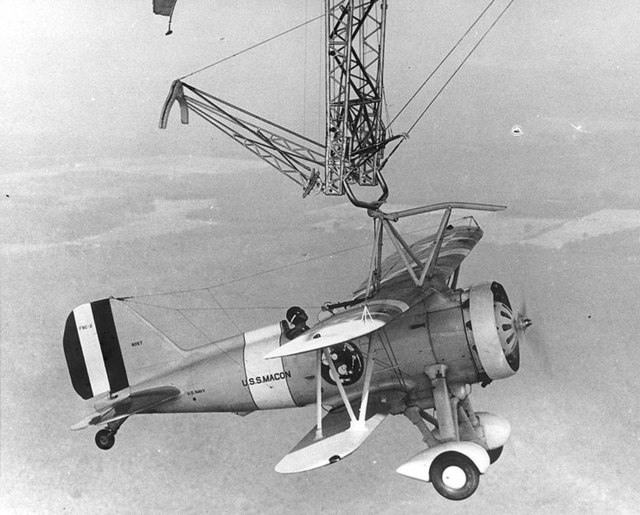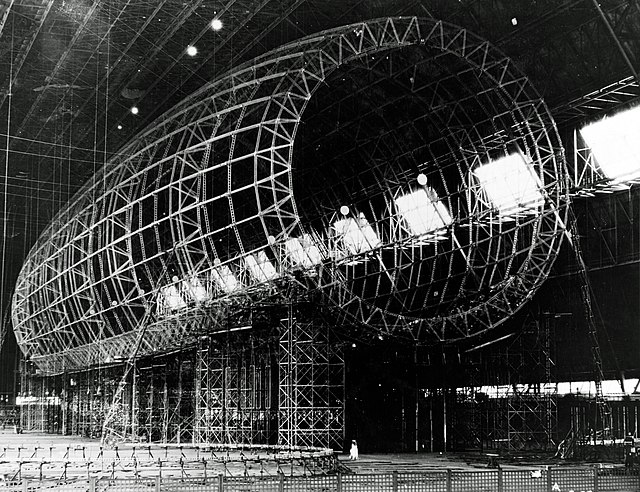The Curtiss F9C Sparrowhawk is a light 1930s biplane fighter aircraft that was carried by the United States Navy airships USS Akron and Macon. It is an example of a parasite fighter, a small airplane designed to be deployed from a larger aircraft such as an airship or bomber.
Curtiss F9C Sparrowhawk
An F9C-2 captures the trapeze aboard Macon in 1933
A Sparrowhawk with its undercarriage replaced by an external fuel tank - on deployment, the aircraft, not requiring the use of the undercarriage, would have it removed and replaced with a 30 gallon fuel tank, significantly increasing the aircraft's range
The XF9C-2
USS Akron (ZRS-4) was a helium-filled rigid airship of the U.S. Navy, the lead ship of her class, which operated between September 1931 and April 1933. It was the world's first purpose-built flying aircraft carrier, carrying F9C Sparrowhawk fighter planes, which could be launched and recovered while it was in flight. With an overall length of 785 ft (239 m), Akron and her sister ship Macon were among the largest flying objects ever built. Although LZ 129 Hindenburg and LZ 130 Graf Zeppelin II were some 18 ft (5.5 m) longer and slightly more voluminous, the two German airships were filled with hydrogen, and so the two US Navy craft still hold the world record for the largest helium-filled airships.
USS Akron
Akron under construction in the Goodyear Airdock at Akron, Ohio in November 1930. Note the three-dimensional, deep rings.
Sample of the duralumin from which the frame of USS Akron was built
The maiden voyage of Akron on 2 November 1931, showing her four starboard propellers. The engines' water reclaiming devices appear as white strips above each propeller. The emergency rear control cabin is visible in the lower fin.








